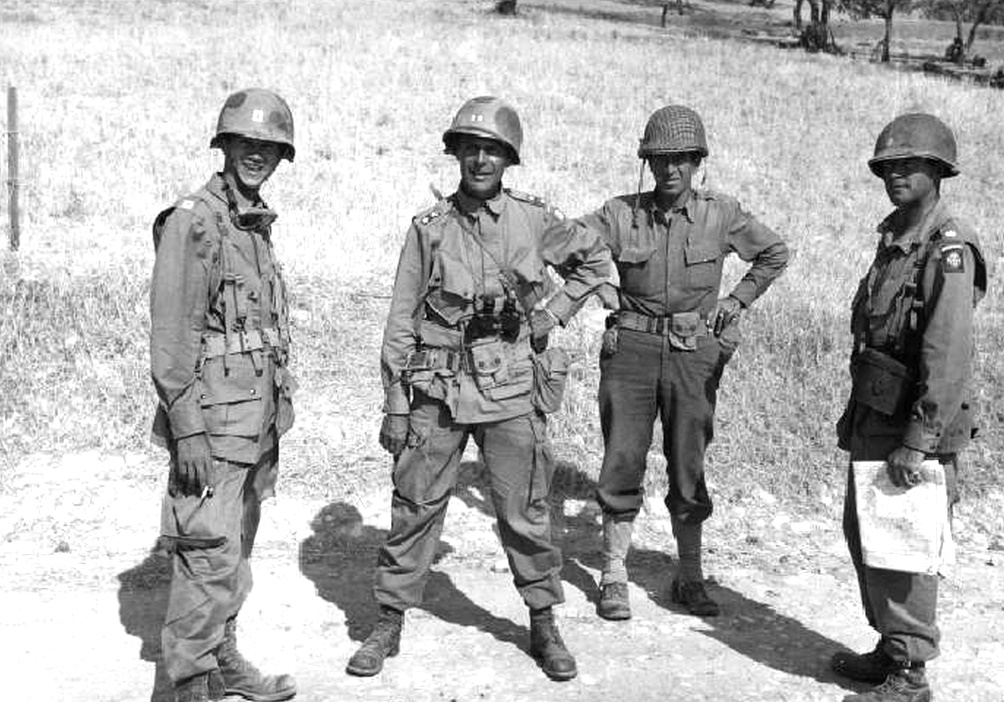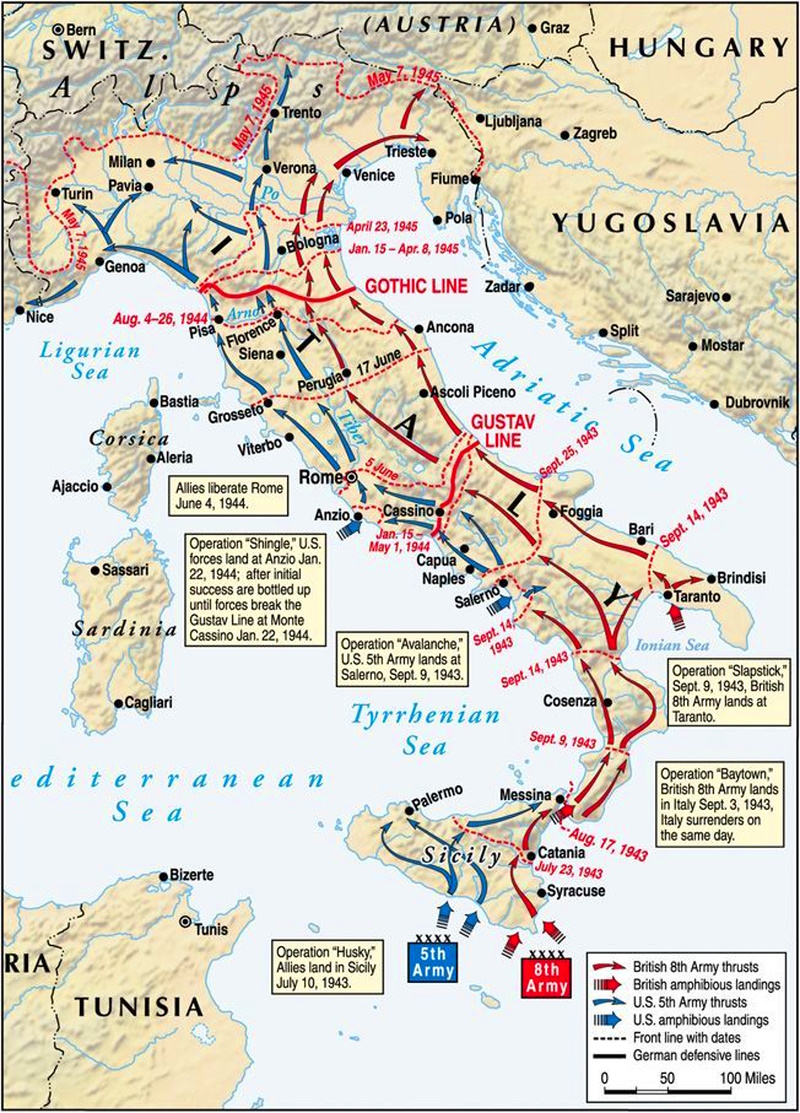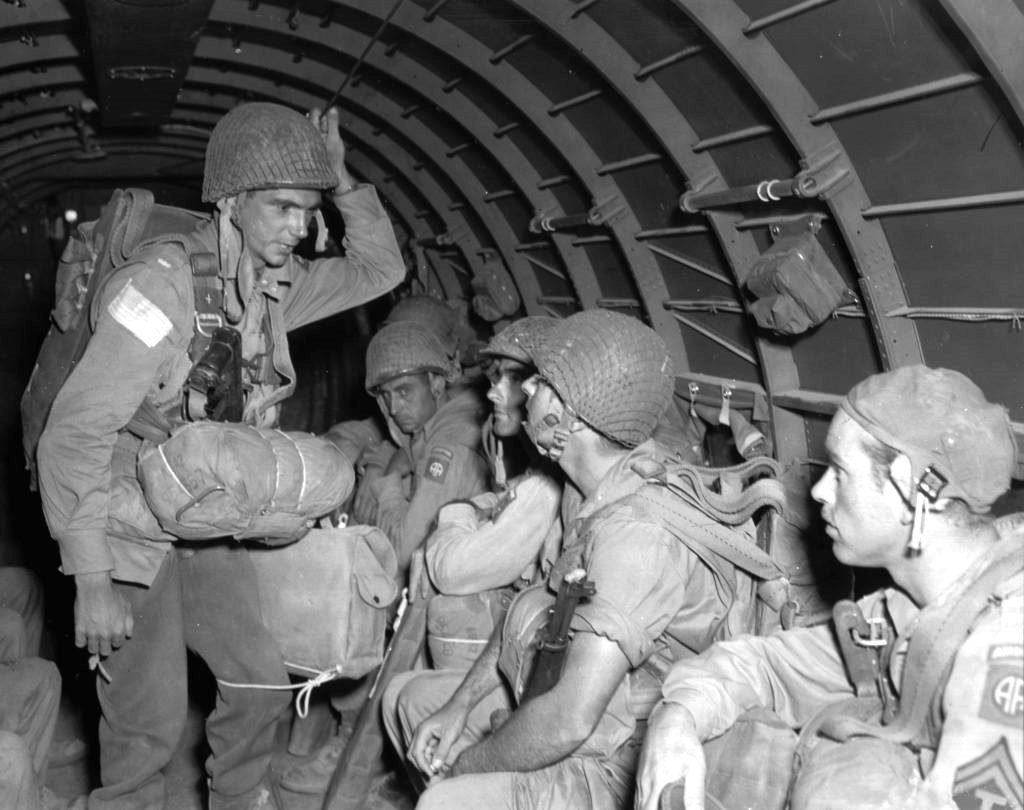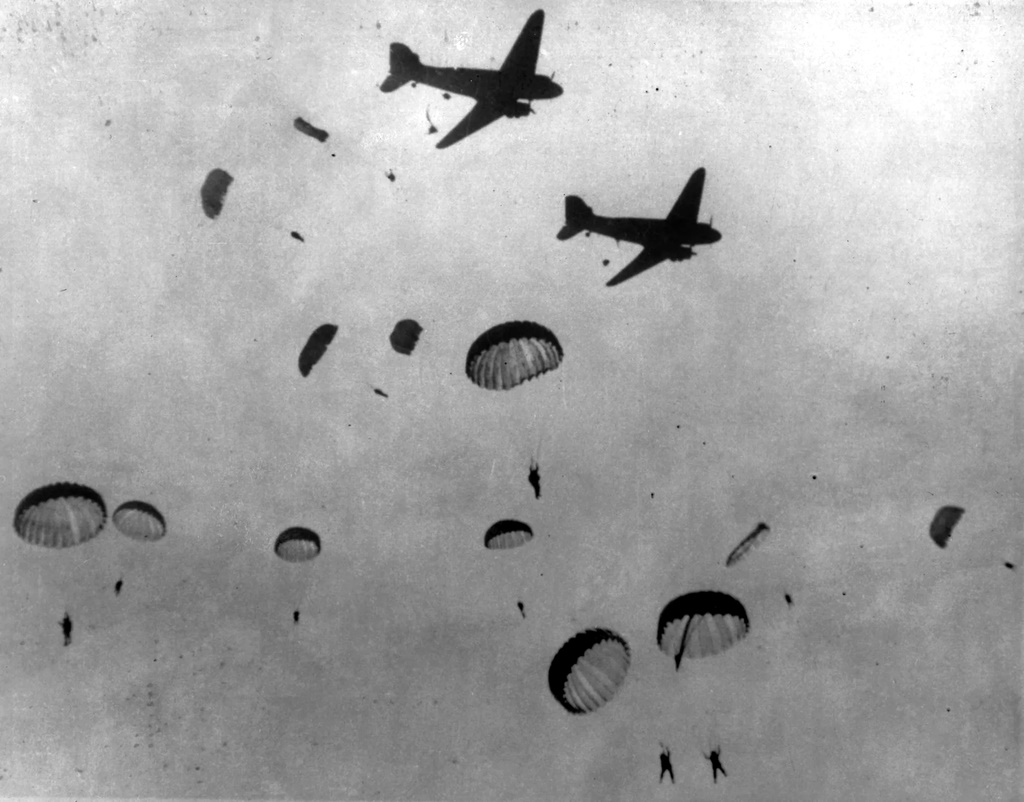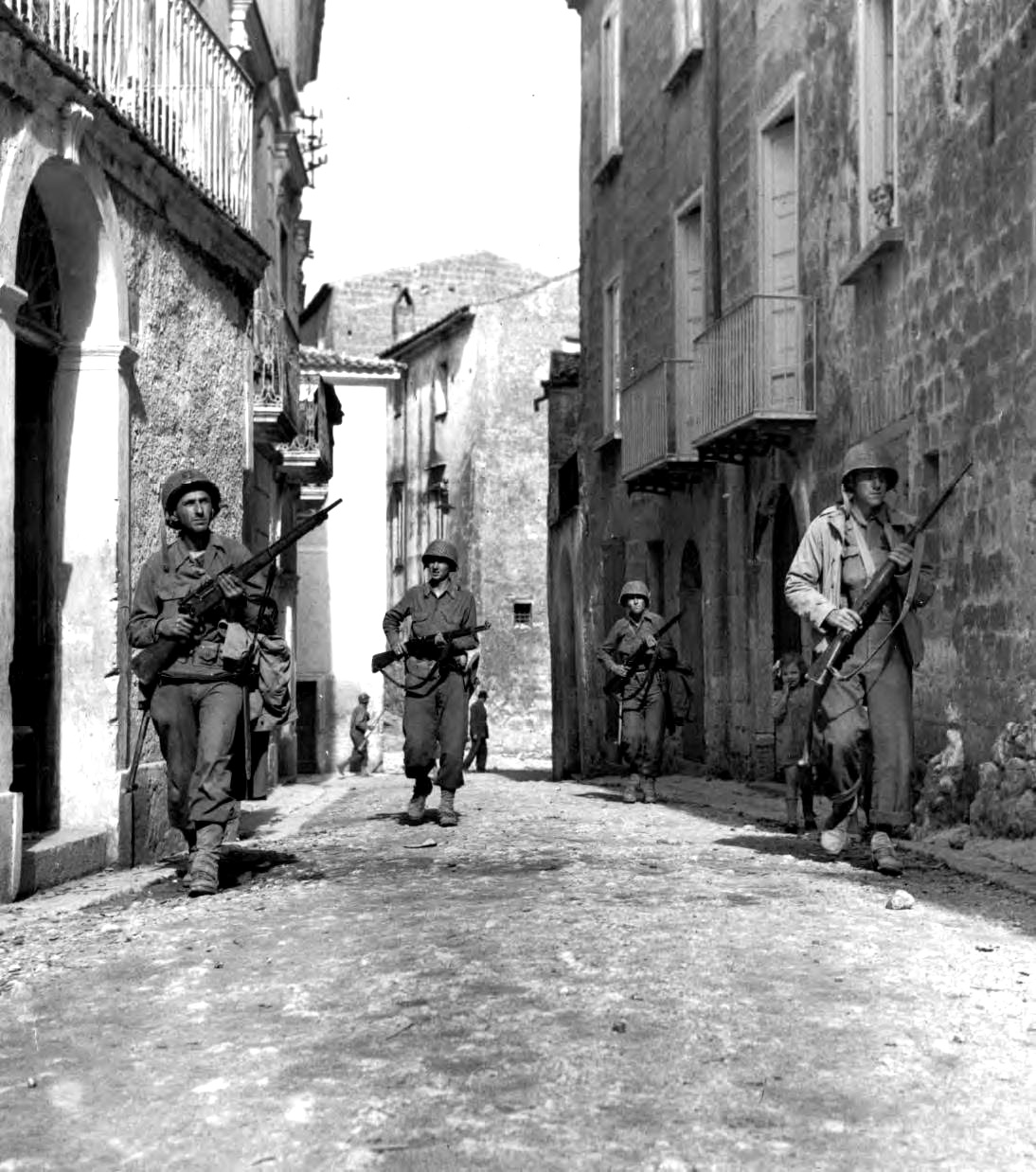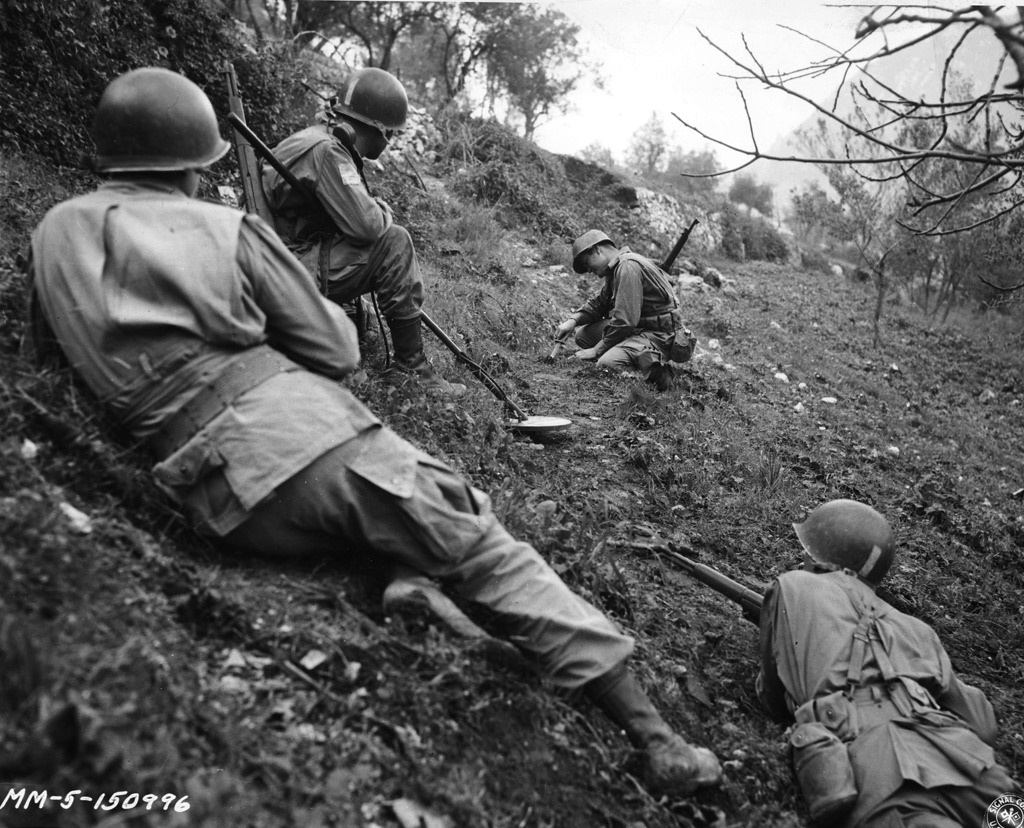Document Source: Operations of the 1st Battalion, 504th Parachute Infantry Regiment, 82nd Airborne Division, in the Capture of Altavilla, Italy, September 13 to September 19, 1943, during the Naples-Foggia Campaign. Maj John S. Lekson, Battalion Operation Officer.
INTRODUCTION
This archive covers the operations of the 1st Battalion, 504th Parachute Infantry Regiment, 82nd Airborne Division, in the battle for Altavilla, Italy, September 16 – September 19, 1943, during the expansion of the Salerno Beachhead. In order to establish the necessary background, related material of earlier date is included.
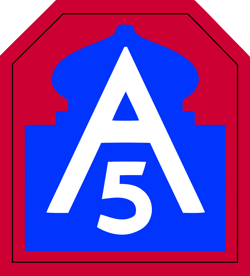
 Allied Staff planning for the invasion of Italy, begun well in advance of the Sicily invasion, envisaged a crossing of the Straits of Messina. However, the changing political tempo and the near collapse of the Fascist Party in July 1943 opened up greater possibilities. From the landing beaches available on the Italian West Coast the narrow plain of Salerno was selected.
Allied Staff planning for the invasion of Italy, begun well in advance of the Sicily invasion, envisaged a crossing of the Straits of Messina. However, the changing political tempo and the near collapse of the Fascist Party in July 1943 opened up greater possibilities. From the landing beaches available on the Italian West Coast the narrow plain of Salerno was selected. 
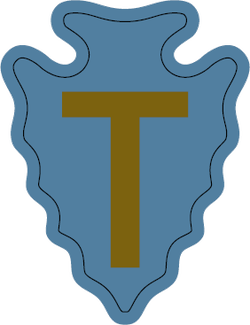 The US Fifth Amy, under Gen Mark W. Clark, was to make the amphibious landing. The British X Corps and the US VI Corps would compose the initial assault forces. The British X Corps, on the left, would make the main effort. The US VI Corps, commanded by Gen Earnest J. Dawley, was to secure the beaches south of the Sele River. The assault forces of the US VI Corps would be the US 36th Infantry Division, commanded by Gen Fred L. Walker. The 36th Infantry Division would seize the beaches in the vicinity of Paestum and move eastward to the high ground. These forces were instructed to push inland and secure a line. La Cosa Creek – Mount Soprano – Trentinara – Ogliastro – Agropoli. D-Day and H-Hour were set for 0330 September 9, 1943.
The US Fifth Amy, under Gen Mark W. Clark, was to make the amphibious landing. The British X Corps and the US VI Corps would compose the initial assault forces. The British X Corps, on the left, would make the main effort. The US VI Corps, commanded by Gen Earnest J. Dawley, was to secure the beaches south of the Sele River. The assault forces of the US VI Corps would be the US 36th Infantry Division, commanded by Gen Fred L. Walker. The 36th Infantry Division would seize the beaches in the vicinity of Paestum and move eastward to the high ground. These forces were instructed to push inland and secure a line. La Cosa Creek – Mount Soprano – Trentinara – Ogliastro – Agropoli. D-Day and H-Hour were set for 0330 September 9, 1943.

 So, on September 9, at H-Hour, troops of the 36th Infantry Division landed on the Paestum Beaches. Behind the assault troops, and in the floating reserve, were three regimental combat teams two from the US 45th Infantry Division and one from the US 82nd Airborne Division. Included in the follow-up troops was the remainder of the 82nd Airborne Division, located in Sicily. The 1st Battalion of the 504th Parachute Infantry Regiment, part of the 82nd Airborne Division, was then located at Comiso, Sicily.
So, on September 9, at H-Hour, troops of the 36th Infantry Division landed on the Paestum Beaches. Behind the assault troops, and in the floating reserve, were three regimental combat teams two from the US 45th Infantry Division and one from the US 82nd Airborne Division. Included in the follow-up troops was the remainder of the 82nd Airborne Division, located in Sicily. The 1st Battalion of the 504th Parachute Infantry Regiment, part of the 82nd Airborne Division, was then located at Comiso, Sicily.
By D+2 the VI Corps sector, established against bitter opposition, was firmly anchored on the right in the Trentinara – Ogliastro region. The Corps center had pushed to the east and included the high ground above the town of Altavilla. However, on the Corps left, the situation was not favorable. Both regimental combat teams of the 45-ID (part of the floating reserve) had been committed. The third regimental combat team, from the 82nd Airborne Division, had not yet left Sicily. Late, on D+4 (September 13) the situation in the VI Corps sector had become so adverse that only artillery had stopped a complete and determined German penetration of the Corps left flank. One battalion of the 45-ID had lost five hundred-eight officers and men. Five battalions of the 36-ID had been savagely hit and pushed back or disorganized in the Selo-Calore Corridor and the Altavilla sector. A desperate reshuffling of units was being accomplished with troops from the Engineers, Tank Destroyers, Anti Tank Companies, Cannon Companies, and Shore Engineers manning a line west of La Cosa Creek. In the VI Corps sector, there were no available reserves to call upon. The nearest units in time distance were parachute elements of the 82nd Airborne Division in Sicily.
GENERAL SITUATION
Some two hundred fifty miles to the south, at Licata Field, Sicily, Gen Matthew B. Ridgeway, CG of the 82-A/B, had received a personal letter from the Fifth Army Commander. The letter, flown in from the Salerno Beachhead, reached the general at 1330, September 13. Among the items in the letter was a request for the drop of one parachute combat team that night south of the Sele River to reinforce the VI Corps. The CO of the 504-PIR, Col Reuben H. Tucker, who had happened at the Licata Field was directed to get the 504-PIR alerted and off as soon as troops were ready and troop carrier aircraft were assembled. However, the 1/504-PIR was then at the Comiso Field, the 2/504-PIR was at Trapani – Milo Field, while the 3/504-PIR was at sea, attached to the division combat element in Army floating reserve.
At the Comiso Field, the 1/504-PIR received a warning order at about 1400. The battalion, commanded by Col Warren R. Williams, was made as ready as it could be. Bundles were rolled, combat gear was checked, and ammunition was issued. All was in readiness except for the usual questions, Where? What? Why? Late in the afternoon, the battalion commander and his officers were briefed in the bombed-out hangar at the Comiso Field. The mission outlined was to parachute onto a secured drop zone about two miles south of Paestum, Italy, and report to a representative of VI Corps who would be there with further instructions. The troops were briefed with the aid of flashlights and the only available maps (scale 1/1.500.000). Only in a cursory manner was the situation on the Salerno Beachhead known. Company planes were assigned and units began to load bundles. All did not move too smoothly. The last seven planes for Baker Co (1-504) did not arrive until 2100 hours and as Baker Co rapidly loaded into planes, the pilots were being briefed.
Shortly after 2100, the first elements of the battalion were moving down the runway. An hour later Baker-504 took off, attempting to catch the formation. One plane assigned to Baker-504 failed to start. At the last second these troops were distributed among the planes still on the ground. Another plane had a flat tire as it taxied down the strip. There was neither time nor a spare plane to move this group. Soon the 1/504 formation passed over Messina, Sicily. Gen Clark’s latter had requested a combat team. Winging its way north was the 504th Parachute Infantry less the 3rd Battalion plus Charlie Co, 307th Airborne Engineer Combat Battalion less its 3rd Platoon.
No parachute artillery accompanied the lift. However, the two battalions of infantry could serve a good cause. While the flight moves north, stops long enough to consider the organization of the 1/504. Three rifle companies: Able, Baker, and Charlie formed its fighting backbone. Each rifle company contained three rifle platoons. The platoons were in turn composed of three rifle squads and one 60-MM mortar squad. Included in the Headquarters Co were the battalion support weapons: one four-gun light machine gun platoon and one four-gun 81-MM mortar platoon. No weapons platoons were included in the rifle companies. Instead, a light machine gun and an automatic rifle were to be dropped with each rifle squad. Orders on the ground would dictate which was to be carried. The battalion was light and it lacked several necessities for sustained ground combat: transportation, and high-velocity AT weapons.
ITALY
The regimental lift proceeded across the Tyrrhenian Sea without enemy interference. Approximately halfway out the formation ran into a cloud bank. As it emerged from the far side, planes had lost the formation. Elements were above, below, and to either side of the battalion S-3’s plane. As the lift neared Agropoli several Charlie Company planes flying too close to shore were fired upon by single small caliber weapons with no effect. Then the red light switched on. The Paratroopers hustled as they fastened harnesses. Bundles were pushed into the door. Snap fasteners clicked onto the anchor line and down the line came the readies. Underneath was Agropoli, then the sea, then a shore and a stream. As the green light switched on, a large flickering T appeared below. Out into space went the bundles and, after the paratroopers snapped out one behind the other. The air was crowded with troops and bundles. Below, the 2/504-PIR was already moving on the drop zone toward a bright light. The drop zone was black-specked, dotted with masses of rocks and small trees.
When the battalion S-3 landed he received word by passed oral message that the battalion commander wanted him at once at the light. As the time turned midnight the battalion S-3 reported to Col Williams. Col Williams directed that the battalion executive officer get the troops assembled and loaded into trucks that were standing by on a road east of the drop zone. He and the battalion S-3 were to meet Col Tucker at a house a few hundred yards away. As soon as they returned the battalion would move off to somewhere else. The regimental Commander was waiting for the arrival of Col Williams. As he reported in, a Col O’Mohundro of the VI Corps began to review the situation in the Corps sector. He told of the troops that had been cut off at Altavilla, and of a gap that existed in the VI Corps line into which the regiment, led by corps guides, would move. The regiment would hold to the last man and last round.
Troops were to be warned that men of the 36-ID would undoubtedly be drifting through the lines. Then Col Tucker made his assignments. The 2/504 would defend the left sector; the 1/504, the right, extending up the north slope of Mount Soprano. When the battalion commander and the S-3 moved back to the trucks, the battalion had already assembled. In one hour they had gathered up the bundles and organized them into company groups. However, only one plane of Baker Co had dropped on the drop zone. All equipment except two spare machine gun bundles had been recovered. Then came an order to move out. North and then east toward Mount Soprano went the battalion convoy until some eight miles from the drop zone it halted. The position to be defended is as a flat valley floor and the north slopes of Mount Soprano. Ahead, some fifteen hundred yards, was La Cosa Creek. At 0200 September 14, troops unloaded from the trucks, and the battalion commander, unable to make a reconnaissance, gave his orders: Able Co on the slope of Mount Soprano, swing to the east, and tie in with Charlie Co north of the road; Charlie Co from just north of the road, extends across the flat valley to the north, and tie in on Tempone Di San Paolo; dig in before daylight and then continue to develop the position. Then with the battalion S-3, he started on reconnaissance to the La Cosa. Except for Mount Soprano, the battalion sector was weak. Several minor draws ran north in front of Charlie Co. The ground from Charlie Co to the La Cosa was flat and the La Cosa was not a barrier. The battalion commander and the S-3 then returned to the battalion position to the site in the supporting weapons.
Administrative work had to be accomplished. Troops had rations for six meals, but only those who had light equipment to jump had brought blankets. The battalion S-4 was instructed to contact the regiment and procure supplies and transportation. A battalion command post and an aid station were located behind Able Co’s position. Wire lines were run to companies. About the command post was located the one plane load from Baker Co. What had happened to the remainder of Baker Co? One hour behind the regimental airborne lift came five Baker Co planes. Probably due to insufficient briefing, the pilot of the lead plane gave Baker Co a green light over the mountains some six miles due south of the drop zone. Upon landing, the company commander, Capt Charles W. Duncan, failed to recognize any landmarks and decided to form a perimeter with his group of some four officers and eighty men. When dawn came, this group could see the Paestum Beaches to their north. At once they moved off toward the beaches. Near the regimental drop zone, they were able to obtain truck transportation and a guide who led them to the battalion defense position. When Baker Co arrived, it was the late morning of September 14.






